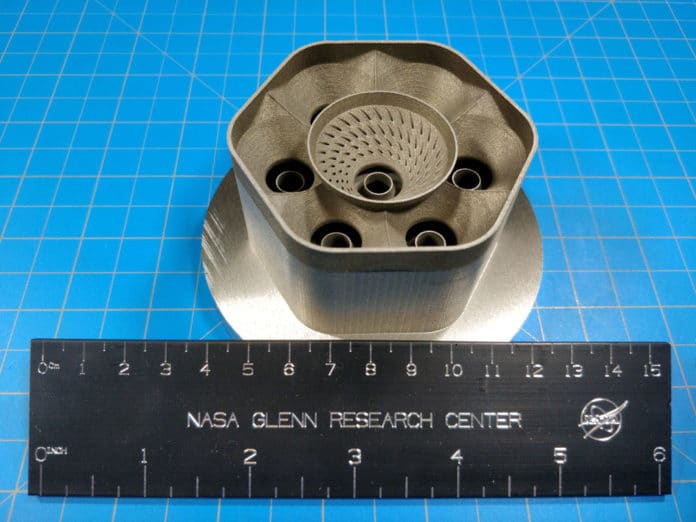NASA has developed a new metal alloy using a 3D printing process that can dramatically improve the strength and durability of the components and parts used in aviation and space exploration, resulting in better and longer-lasting performance.
NASA’s newly developed alloy dubbed GRX-810 would be an oxide dispersion strengthened (ODS) alloy, which means it can withstand harsher conditions before reaching its breaking point. The new material can endure extreme temperatures over 2,000 degrees Fahrenheit (1,093 degrees Celsius) and can survive more than 1,000 times longer than existing state-of-the-art alloys. In addition, it has twice the strength to resist fracturing and three and a half times the flexibility to stretch or bend prior to fracturing.
Using thermodynamic modeling, the NASA researchers determined the optimal alloy composition after only 30 simulations. Thermodynamic modeling, one of many computational tools discussed within the NASA 2040 Vision Study, produces results in much less time and with lower costs than traditional trial-and-error processes, the team says. They then leveraged 3D printing to uniformly disperse nanoscale oxides throughout the alloy, which provides improved high-temperature properties and durable performance. This manufacturing process could also make it very cost-effective from a production standpoint.
The GRX-810 alloys can be used to build aerospace parts for high-temperature applications, like those inside aircraft and rocket engines. When used in a jet engine, the alloy’s higher temperature and increased durability capability translate into reduced fuel burn and lower operating and maintenance costs. It also affords engine part designers new flexibilities like lighter materials paired with vast performance improvements.
“This breakthrough is revolutionary for materials development. New types of stronger and more lightweight materials play a key role as NASA aims to change the future of flight,” said Dale Hopkins, deputy project manager of NASA’s Transformational Tools and Technologies project. “Previously, an increase in tensile strength usually lowered a material’s ability to stretch and bend before breaking, which is why our new alloy is remarkable.”
